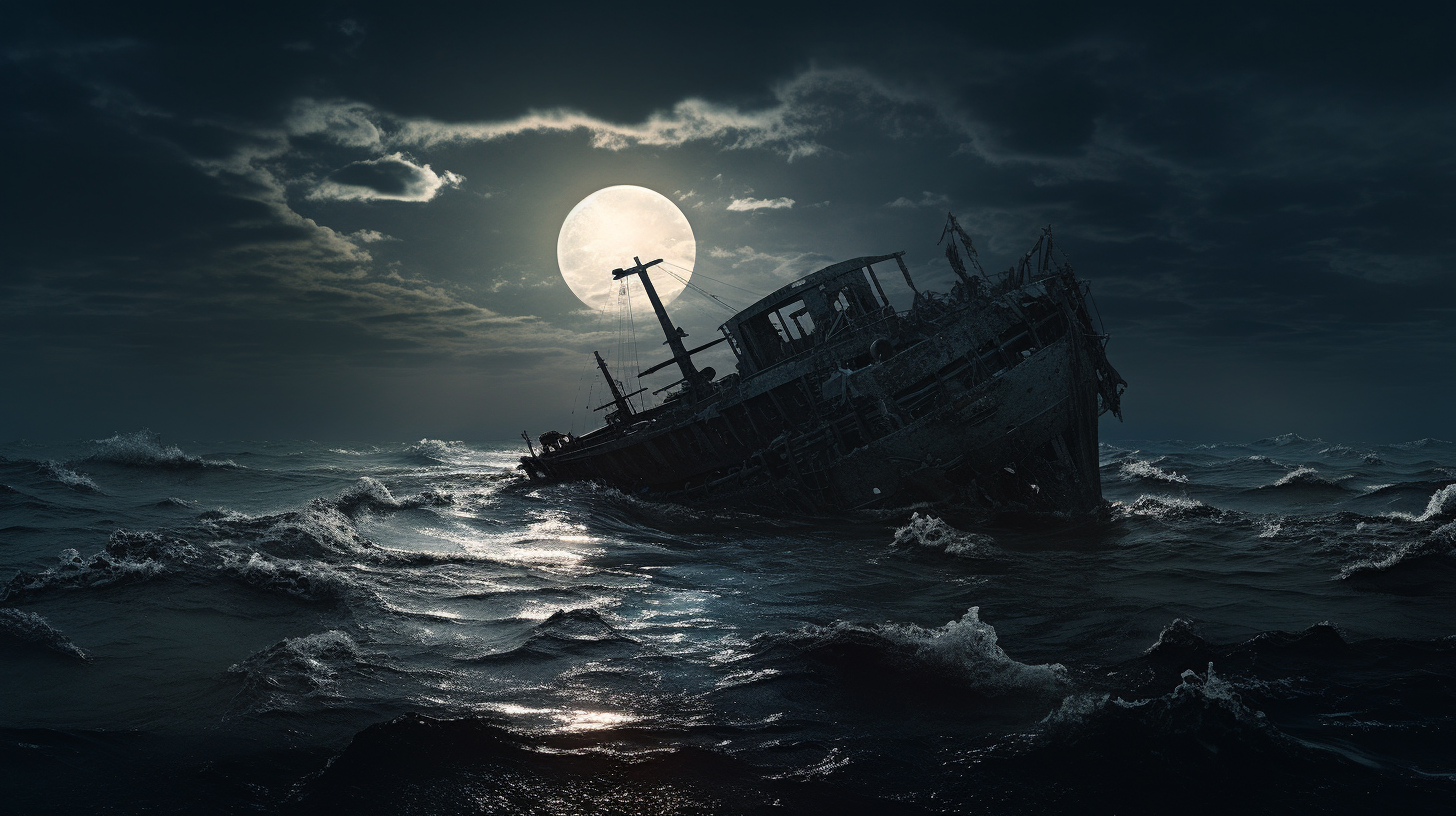In an epoch where the caliginous sky usurps the horizon, our narratives have long been steeped in tales of environmental downfall. This chronicle is no exception, and yet, it weaves a fable not oft told—the fracturing ripples of our world’s celestial symphony. The story unfolds beneath a once vibrant moon, now a distant, neglected orb, forsaken amidst the turmoil of terrestrial crises. Lost Tides, Forgotten Moon – The Collapse of the Celestial Dance delves into this cosmic desuetude, unraveling the impacts of Earth’s environmental degradation on its ancient, gravitational tango with the Moon.
Time was, the Moon’s ubiquitous shimmer guided the rhythmic dance of oceans beneath. But now, the tides grow erratic, and coasts once caressed by systematic swells are left bewildered by the unpredictable sea. Marine life, reliant on the lunar-crafted schedules, finds itself ensnared in a disarray of ecological miscues. The lore of mariners, speaking of a dependable swell to guide them home, falls quiet in the wake of an oceanic cacophony.
It’s not simple folklore, but the gravitational interplay between Earth and Moon that faulters—a spectacle much grander yet equally vulnerable. Scientists routinely leveraged lunar cycles to predict tidal ebbs and flows, but now face a conundrum as climate change disrupts this delicate orbital equilibrium. In an irony of cosmic proportions, human endeavors have managed to unhinge the once-stable orbit, casting shadows upon our future that not even the brightest minds can interpret.
The tenuous link is seen in the asymmetrical rise in global sea levels, not only attributed to the melting ice caps and thermal expansion but also to changes in heavenly synchrony. Sagas speak of once predictable phenomena, like king tides, now heralding floods and erosion with a newfound ferocity undreamt by ancient watchers of the sky. Data reveals that the Moon, aloof and uncaring, is slowly spiraling away from Earth—and with each centimeter, another strand of the celestial fabric tears.
But where do we, the onlookers of this grand tragedy, find our place in the narrative? Are we to be but solemn spectators to the slow demise of nocturnal majesty, as cities drown, and shorelines retreat into the relics of legends? The melancholy reflection of moonlight on water, once a poet’s dream, morphs into the eerie backdrop for contemplating a future where high tide is no reader of almanacs, nor resolutory to a sailor’s prayer.
Amid these musings, we are confronted with yet another vertex of catastrophe—the implications for astronautic pursuits. Space becomes a more hostile frontier with each centimeter our satellite retreats. Celestial navigation—a technique steeped in the constancy of cosmic relationships—comes under threat as orbiting debris harnesses the chaos, painting a far bleaker picture for our endeavors among the stars.
In this solemn requiem, let us not forget the grounding effects of this lunar loss. The human spirit, once buoyed by the dream of annexing the stars, now faces the specter of being forever moored to a dying planet. As folktales fade into the silence of night, and the wisdom of ancestors become murmurs of a bygone era, the celestial dance seems all but a forgotten pageantry, its music drowned out amidst the cacophony of human hubris.
Do we dare, in this dystopian interlude, to consider a reversal of fortunes? Or do we content ourselves with elegies for a moon too distant, tides too erratic, and a dance too fragile? This, dear reader, is the ode to our Lost Tides, Forgotten Moon—a lament for the celestial symphony in jeopardy, as Earth’s requital whispers across the endless void with silent remorse.
